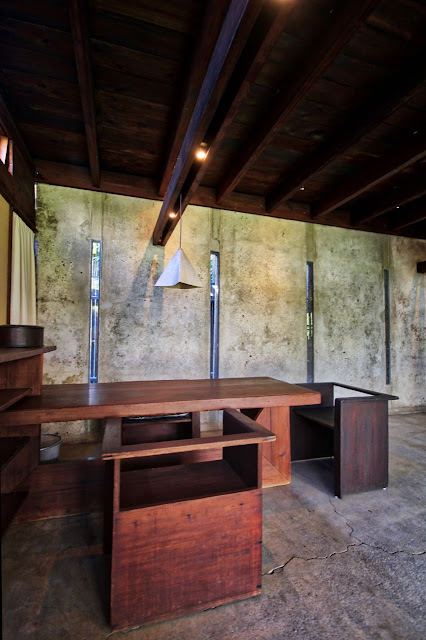For several months before the holidays, when I asked the bride what she wanted for Christmas, she calmly, methodically, and consistently replied: "A safe, outdoor space for our cats."
In other words, a catio: An enclosed patio built for cats.
I can't say that I was excited about this request because installing a catio at our house will be a gestaltic horror. When your home is part of the greater suburban nightmare, you probably don't sweat the architectural implications of adding one. It's an issue (at least in my mind) for our house.
Conveniently, the 2nd Annual Austin Catio Tour was last weekend, cleverly sponsored by the local branch of the Audubon Society. The Audubons are involved because scientists estimate that free-ranging domestic cats kill 1.3 to 4.0 billion birds and 6.3 to 22.3 billion small mammals every freakin' year. Often, the greatest threat to small, endangered species is cute little Fluffy.
Anyone who owns a cat knows that they are stone-cold killers, and their desire to massacre birds is baked into their DNA. Furthermore, the outdoors is dangerous for a cat. They fight with strays, dogs, and, in our neighborhood, get eaten by coyotes. So on the catio tour we went with a fellow cat lady from the bride's office.
The tour was illuminating. The primary builder is The Cat Carpenter, and he does good, solid work. His structures lean rustic with unfinished cedar, but they feature accidental neoplasticism with sliding planes due to staggered jumping shelves for the mewers. And we learned about Super Screen, a miracle material which looks like standard window screen but stands up to cats claws, even when your pride and joy climbs the screen. Amazing! (And something we need for our regular windows.)
Most of the catios we saw gain access to the outdoors through window inserts, something we won't be able to do with casements. That means we'll have to either go through the bedroom door (which would require a new door) or through a wall. My first thought was to run it out through said bedroom door; however, that's not ideal aesthetically, we would need a new door, and breaching the door with a cat door will increase noise in what needs to be the quietest part of the house. A catio in that location would also be on the small side (when we showed our cat lady friend this option, she replied: "Oh."). That drew us to the utilitarian side of the house, the south side (the front, the north, and the back sides of the house are all visible to either the public or back yard visitors).
One option was to go through the wall in the bathroom to access the outdoors behind our bedroom; however, access is awkward (somewhat behind the tub) and has to go through tile, stucco, and probably a lot of support two-by-fours. We also talked about going out of the office wall, but, again, stucco, and there's not a lot of space for a spacious patio. Yesterday, when gawking the space once more, I thought of coming out of the second landing heading up the stairs to the second floor. Bingo! There would be a short catwalk (of course there would be) into the catio, and the resulting catio could be gloriously tall. This option seems perfect: No stucco, the cat door is hidden from the primary public passageways, there's ample space, and we don't have to dwell on aesthetics.
Hear ye! Hear ye! The Cat Carpenter cometh soon!
The Cat Carpenter with a happy customer.
Older cats get worried about going outside, but this 'ole girl enjoys the sun in safety.









Ramp for an older cat.

Sub-shelves for a blind cat.

We listened to catty tracks all day.










































































